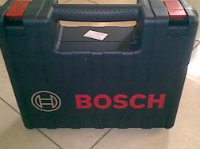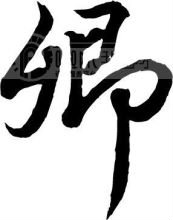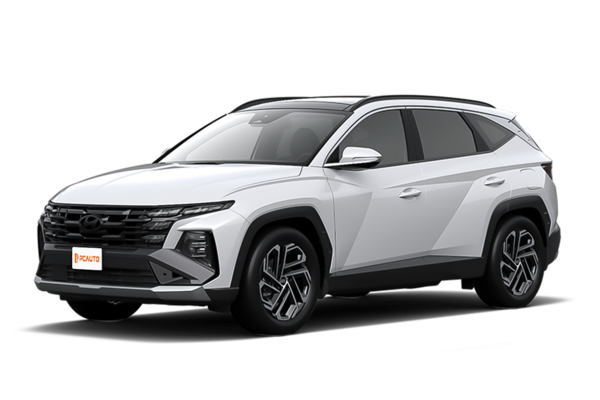Q
How much will 2025 Tucson cost?
The exact pricing for the 2025 Tucson hasn’t been announced yet, but based on the current model’s price range and its positioning in the compact SUV segment, we expect a starting price between RM140,000 and RM180,000. Final figures will vary depending on trim levels and optional extras.
The new model is likely to feature upgraded driver-assist tech, including more advanced lane-keeping and adaptive cruise control. Inside, we could see improved materials, a larger infotainment screen, and added convenience features like wireless charging.
With the compact SUV market getting more competitive, brands are packing in better tech while keeping prices sharp. If you’re interested, keep an eye out for official updates or check with local dealers for the latest offers. It’s also worth comparing specs and pricing against rivals to make the right choice.
Special Disclaimer: This content is published by users and does not represent the views or position of PCauto.
Related Q&A
Q
Will the Hyundai Tucson change in 2025?
Based on current information, the 2025 Hyundai Tucson is expected to receive several updates, likely including subtle exterior styling tweaks, interior upgrades, and enhanced tech features—such as a more advanced infotainment system or driver-assistance technologies. However, official details are still pending.
Hyundai typically refines design language and boosts tech offerings during mid-cycle updates, so the new Tucson may feature sharper lighting signatures or a larger touchscreen while retaining existing powertrain options, including gasoline and hybrid variants.
For buyers prioritizing practicality and technology, the Tucson has always been a solid value proposition in its class, offering spacious interiors and generous standard features that cater well to families. The refreshed model could further strengthen these strengths.
If you're considering a purchase, keep an eye out for official updates later this year to confirm specs and launch timing. It’s also worth cross-shopping rivals in the segment to ensure you’re choosing the right SUV for your needs.
Q
What is the top speed of a Hyundai Tucson 2018?
The top speed of the 2018 Hyundai Tucson in Malaysia varies depending on the engine setup. The 2.0L naturally aspirated variant maxes out around 185 km/h, while the 1.6L turbocharged model can hit approximately 195 km/h. Of course, real-world performance might differ based on road conditions, vehicle load, and maintenance upkeep. As a family-focused SUV, the Tucson prioritizes fuel efficiency and comfort over outright speed. That's why it comes equipped with Hyundai's SmartSense safety suite, featuring Lane Keeping Assist and Autonomous Emergency Braking—perfect for Malaysia's mix of city streets and suburban roads. It's worth remembering that top speed is just one part of a car's performance story. When shopping, consumers should also weigh factors like fuel consumption, interior space, and warranty coverage. Hyundai Malaysia's 5-year unlimited mileage warranty is definitely a key selling point for local buyers.
Q
What is the mileage of Hyundai Tucson 2018?
The real-world fuel economy of the 2018 Hyundai Tucson in Malaysia can vary depending on the specific trim and driving conditions. Official figures suggest the 2.0L naturally aspirated engine returns around 7.5 to 8.2 liters per 100km in mixed driving, while the more efficient 1.6L turbocharged variant clocks in at approximately 6.8 to 7.4 liters per 100km. Of course, these numbers can fluctuate based on driving habits, road conditions, and how well the vehicle's been maintained.
For Malaysian buyers, the Tucson sits right in the mainstream for fuel efficiency among mid-size SUVs. It's perfectly capable of handling daily city commutes while still being suitable for longer highway drives. A quick tip: keeping up with regular maintenance like changing the air filter, using the right viscosity oil, and maintaining proper tire pressure can all help keep those fuel economy figures in check.
If you're looking at a used 2018 Tucson, it's a good idea to check the on-board computer for historical average fuel consumption or better yet, arrange a test drive. The previous owner's driving style and maintenance history can have a pretty big impact on actual fuel efficiency. Hyundai's Gamma and Theta engine families paired with their six-speed automatic transmissions were pretty solid by this point, offering a good balance of reliability and efficiency.
Q
How to reset oil life on a 2018 Hyundai Tucson?
To reset the oil life indicator on a 2018 Hyundai Tucson, first make sure the vehicle is turned off. Then, press and hold the "reset" button on the instrument cluster—you'll usually find this near the steering wheel or on the side of the dashboard. While keeping the button held down, turn the ignition switch to the "ON" position (no need to start the engine). Hold the button for about 10 seconds until the oil life gauge or message resets to 100%.
It’s worth noting that Tucsons with different trim levels might have slightly different steps, so it’s always a good idea to double-check your owner’s manual for the exact procedure.
Also, regular oil changes are key to keeping your engine healthy. With Malaysia’s hot weather, we recommend using fully synthetic oil and changing it every 5,000 to 8,000 kilometers or 6 months—whichever comes first. If you do a lot of stop-and-go city driving, you might want to shorten that interval a bit.
Remember, resetting the oil light is just one part of maintenance. You should also check your oil level, inspect the oil filter, and top up coolant to keep your Tucson running at its best. If you’re not confident doing this yourself, head to a Hyundai authorized service center. They’ll use genuine parts and follow proper procedures, which helps protect your vehicle’s warranty too.
Q
Should I buy a 2018 Hyundai Tucson?
The 2018 Hyundai Tucson is a solid SUV choice for Malaysian families. Under the hood, you'll find either a 2.0L naturally aspirated engine or a peppy 1.6T turbo – both deliver smooth power and decent fuel efficiency, making it equally at home in city traffic or on long highway drives. Step inside, and you're greeted with a spacious cabin; the rear legroom and boot capacity are particularly family-friendly, easily swallowing all your gear for weekend getaways.
When it comes to features, Hyundai hasn't skimped. Standard kit includes handy stuff like Apple CarPlay, Android Auto, and a reverse camera. Move up to the higher trims, and you'll score nice-to-haves like a panoramic sunroof and power tailgate, which really up the convenience factor. Safety-wise, it checks the boxes with six airbags, Electronic Stability Control (ESC), and hill-start assist – all the mainstream essentials you'd expect.
Now, a couple of things to note. Some owners mention the suspension is on the firmer side, which can take the edge off comfort on Malaysia's less-than-perfect road surfaces. Also, if resale value is a top priority, it doesn't quite match the retention rates of its Japanese rivals.
So, who is this Tucson for? If your budget is around RM100k, and you value bang for your buck with a good level of kit, the 2018 Tucson is definitely worth a look. Just be sure to check the service records and take it for a thorough test drive to ensure it's in good shape. Competitors like the Honda CR-V and Mazda CX-5 might have the edge in terms of resale value and driving dynamics, but the Tucson fights back with its feature list and price point – ideal for shoppers who prioritize practicality over badge prestige.
Q
What kind of oil does a 2018 Hyundai Tucson take?
For the 2018 Hyundai Tucson in Malaysia, the recommended oil viscosity is typically 5W-20 or 5W-30 full synthetic oil. The exact choice should follow the manufacturer's advice in your owner's manual, as different engine variants might have slight variations – like the 2.0L Nu MPI and 1.6L Gamma T-GDI turbo engines, which could have marginally different oil specs. Full synthetic oil offers superior high-temperature protection and fuel efficiency, making it especially well-suited for Malaysia's hot and rainy climate.
Oil changes are recommended every 5,000 to 10,000 kilometers or 6 months, whichever comes first. If you do a lot of short trips or drive in consistently high temperatures, you might want to shorten that interval a bit. When picking oil, look for the API SN (or higher) rating and the ILSAC GF-5 certification mark – these ensure the oil meets the technical demands of modern engines.
If your Tucson has clocked over 80,000 kilometers, consider switching to a high-mileage 5W-30 formula. It's designed to better protect aging engine components. When buying oil in Malaysia, stick with reputable brands like Shell Helix or Petronas Syntium, and make sure you're getting them from authorized dealers to avoid fakes. And don't forget to pair that oil with a genuine Hyundai oil filter – it does a better job trapping contaminants to keep your engine healthy.
Q
What kind of transmission does a 2018 Hyundai Tucson have?
The 2018 Hyundai Tucson offers Malaysian buyers a choice between a 6-speed manual (6MT) and 6-speed automatic (6AT) gearbox, with the specific transmission depending on the trim level and powertrain. For instance, the 2.0L naturally aspirated petrol engine typically comes paired with the 6AT, while some diesel variants might feature the 6MT. Hyundai's transmission tech is known for smooth shifts and solid durability – the 6AT uses smart logic control that adapts to your driving style, balancing fuel efficiency with responsive power delivery.
In Malaysia's tropical climate and varied road conditions, transmission cooling is crucial, and Hyundai's cooling system is designed to handle extended periods of stop-and-go city traffic or long highway drives. If you're eyeing a used Tucson, it's wise to get a professional inspection to check the transmission fluid condition and shift performance. Sticking to regular changes of the factory-recommended fluid can seriously extend its lifespan.
Rivals like the Honda CR-V or Toyota RAV4 in the same segment also use similar 6-speed auto setups, but each brand has its own tuning character – Hyundai leans more towards a comfortable, smooth-driving experience.
Q
What engine does a 2018 Hyundai Tucson have?
The 2018 Hyundai Tucson in the Malaysian market mainly offers two gasoline engine options: a 2.0-liter MPI naturally aspirated engine and a 1.6-liter T-GDI turbocharged engine. The 2.0-liter engine can produce 155 horsepower and 192 Nm of torque. It's paired with a 6-speed automatic transmission, focusing on smoothness and durability, which is suitable for daily commuting. On the other hand, the 1.6-liter turbo version has 177 horsepower and 265 Nm of torque, and it's mated to a 7-speed dual-clutch transmission. It offers stronger power performance, making it a great choice for consumers who pursue driving pleasure. Both engines meet the then Malaysian emission standards.
As a popular SUV, Hyundai Tucson's engine technology emphasizes the balance between fuel economy and reliability. The 2.0-liter version uses the mature multi-point injection technology, resulting in lower maintenance costs. The 1.6-liter turbo engine applies direct injection and turbocharging technologies, providing abundant torque even at low speeds. It's worth mentioning that Hyundai offers a 5-year or 300,000-kilometer warranty (whichever comes first) for these two engines, demonstrating their confidence in the quality.
Malaysian consumers can make a decision based on their driving habits and budget. If they often drive long distances or carry heavy loads, the 1.6T version would be a more ideal option. However, if their driving is mainly for city commuting, the 2.0-liter version is sufficient to handle most road conditions.
Q
Is the 2018 Hyundai Tucson good in the snow?
The 2018 Hyundai Tucson shows certain adaptability in snow performance, which is mainly attributed to its optional HTRAC all - wheel drive system. This system can automatically distribute torque between the front and rear wheels according to road conditions, enhancing grip on slippery roads. Meanwhile, the standard - equipped Electronic Stability Control (ESC) and Traction Control System (TCS) also help prevent the vehicle from skidding on low - traction surfaces. However, if you plan to use the vehicle in severely cold or snowy areas, it is recommended to replace with winter tires to significantly improve snow performance, as the original all - season tires may have limited performance under extreme ice and snow conditions. For Malaysian users, although the local climate doesn't require considering snow driving, these features will prove useful if they plan a self - driving trip to temperate countries or export second - hand cars to cold regions. It should be noted that the snow performance of any vehicle depends not only on the drive system but also on driving habits, tire selection, and regular maintenance. For example, the condition of the braking system and chassis components can affect winter driving safety.
Q
Does the 2018 Hyundai Tucson have transmission problems?
The 2018 Hyundai Tucson has a relatively reliable overall performance in the Malaysian market. However, some owners have reported that the 6 - speed automatic transmission installed in it may experience shifting jerks or delayed responses after long - term use. Such problems are usually related to the aging of the transmission fluid or software tuning, and they are not common failures.
It is recommended that owners regularly replace the original - specified transmission fluid according to the manufacturer's instructions and ensure that the transmission system is inspected every 60,000 kilometers or so. This kind of preventive maintenance can effectively extend the lifespan of the transmission. Hyundai has carried out multiple software upgrades on the transmission control logic since 2018. Owners can go to the authorized service centers in Malaysia to inquire about the latest upgrade version.
It's worth noting that the performance of the transmission is also closely related to driving habits. Avoiding frequent rapid acceleration or long - term low - speed climbing can reduce the load on the transmission. If abnormal shifting or strange noises are found, it is recommended to conduct a professional diagnosis in time. Early treatment can usually avoid higher repair costs.
As a popular SUV in Malaysia, the powertrain of the Hyundai Tucson comes with a 5 - year or 300,000 - kilometer warranty (whichever comes first). Owners can make full use of this privilege.
Latest Q&A
Q
Will the Hyundai Tucson change in 2025?
Based on current information, the 2025 Hyundai Tucson is expected to receive several updates, likely including subtle exterior styling tweaks, interior upgrades, and enhanced tech features—such as a more advanced infotainment system or driver-assistance technologies. However, official details are still pending.
Hyundai typically refines design language and boosts tech offerings during mid-cycle updates, so the new Tucson may feature sharper lighting signatures or a larger touchscreen while retaining existing powertrain options, including gasoline and hybrid variants.
For buyers prioritizing practicality and technology, the Tucson has always been a solid value proposition in its class, offering spacious interiors and generous standard features that cater well to families. The refreshed model could further strengthen these strengths.
If you're considering a purchase, keep an eye out for official updates later this year to confirm specs and launch timing. It’s also worth cross-shopping rivals in the segment to ensure you’re choosing the right SUV for your needs.
Q
What is the resale value of a 2018 CLA?
**2018 Mercedes-Benz CLA Used Value Guide**
The resale value of a 2018 CLA depends on factors like condition, mileage, specs, and service history, typically ranging between RM100k to RM150k—exact pricing requires an in-person inspection. Thanks to the Mercedes badge and its coupe-like styling, the CLA holds decent demand in the used market, especially low-mileage examples with full maintenance records.
Key factors affecting price:
- Complete service history (dealer stamps preferred)
- Remaining factory warranty
- Exterior color (popular shades like black/white may command slightly more)
- AMG Line or higher trims can add 5-10% over base models
Note: Luxury cars take the biggest depreciation hit in the first 3 years, but the CLA (being an entry-level model) retains value better than most. Before selling, get a professional inspection and organize all receipts—it helps justify your asking price.
For reference, check comparable Audi A3 or BMW 2 Series listings, though the CLA’s frameless doors and brand appeal often give it a slight edge. For the most accurate valuation, review recent transactions on local used car platforms or visit an official Mercedes-Benz Certified Pre-Owned dealer.
Q
How much is a 2018 CLA 250 worth?
Here's a natural-sounding translation from an automotive editor's perspective:
"The 2018 CLA 250 currently holds a market value of around RM150k to RM180k, depending on factors like condition, mileage, specs, and service history. Well-maintained models with low mileage can fetch prices near the top end, while those with visible wear or accident records may drop significantly.
As Mercedes-Benz’s entry-level coupe, the CLA 250 packs a 2.0L turbocharged engine delivering 208hp and 350Nm of torque, paired with a 7-speed dual-clutch transmission. It offers sharp handling and lively performance—ideal for drivers who enjoy a sporty feel.
Inside, you’ll find a refined cabin with standard features like a multimedia system and reversing camera. Higher-spec variants might add extras like a sunroof or premium audio.
If you’re shopping for a used unit, always check maintenance records and get a professional inspection on critical components (engine, gearbox, etc.). For context, cross-shop rivals like the A 250 or BMW 2 Series from the same year to weigh your options thoroughly."
(Note: Adjusted "RM" placement for natural flow and trimmed some redundant phrasing while keeping the technical details and conversational tone.)
Q
What is the maintenance cost for a 2018 CLA?
**Maintenance Costs for the 2018 CLA**
The maintenance costs for a 2018 CLA can vary depending on the vehicle’s condition, mileage, and the services required. A standard service typically includes basic items like an oil and filter change, which may cost between RM 800 to RM 1,500—depending on the type of oil used and whether you go to an authorized dealer or a third-party workshop.
If additional services are needed, such as brake fluid replacement, air filter changes, or tire rotation, the cost could go up to around RM 2,000 to RM 3,000. To keep the car running smoothly, it’s recommended to service the CLA every 10,000 km or 12 months, whichever comes first.
As a luxury model, the CLA’s parts and labor costs may be slightly higher than mainstream brands. However, sticking to regular maintenance helps extend the car’s lifespan and prevents costly repairs down the road. To save on expenses, owners can consider prepaid service packages or reputable independent workshops. Just make sure to keep full service records—it’ll help maintain the car’s resale value.
Q
Is the Mercedes CLA 2018 a good car?
The 2018 Mercedes-Benz CLA is a luxury compact coupe that carries the brand's signature sporty design language. Its frameless doors and fastback silhouette make it instantly recognizable in its class. Under the hood, you've got two engine options – a 1.6T or 2.0T, both paired with a 7-speed dual-clutch transmission that delivers smooth power delivery and decent fuel efficiency, making it ideal for city driving.
Inside, the cabin follows Mercedes' design ethos of the time, with materials and craftsmanship living up to the brand's reputation. That said, rear-seat space is a bit tight, which is pretty typical for coupe-style cars. Standard safety features include autonomous emergency braking, though it's worth checking trim levels carefully – higher specs come with more advanced driver-assist systems.
One thing to keep in mind: maintenance costs for imported luxury cars like this tend to be higher than mainstream brands, so it's smart to research parts availability beforehand. If you're cross-shopping, there are other entry-level luxury models in this price range, but the CLA's coupe styling remains its standout feature, perfect for buyers who want something distinctive with that three-pointed star appeal.
View MoreRelated News

Hyundai's Big Return to Malaysia: Top 5 Models Expected
MichaelMay 30, 2025

In Malaysia, which sliding door MPVs are available?
MichaelOct 30, 2025

Modern Ioniq 5 N Lands in Malaysia: Track-Level Performance Electric Vehicle is Here, Priced Possibly Below RM 400,000?
JohnSep 10, 2025

580,000 km & 87.7% Battery Health: Ioniq 5’s Incredible Durability
MichaelMay 6, 2025

Revolutionizing Hybrids: Hyundai’s New System vs. Toyota's Hybrid System
Kevin WongApr 22, 2025
View More

















Pros
Cons